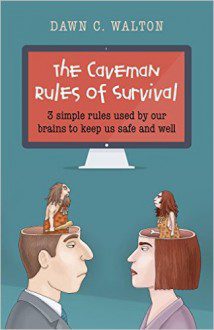November 4th, 2016
By Dawn Walton
Guest writer for Wake Up World
The dictionary definition of the word ‘forgive’ is: [verb] stop feeling angry or resentful towards (someone) for an offence, flaw, or mistake.
Stop feeling. Interesting.
A feeling is an energy and energy can’t be stopped, it can merely be transformed.
For many years I believed I needed to forgive my abuser to move on. I felt bad because I couldn’t forgive him. I felt worse because I didn’t want to forgive him. I felt bad because everything I read said I should forgive him to free myself up.
Was I dooming myself to a life of pain because I had no idea how to forgive?
If you try and contain an energy it causes damage. It builds up to something bigger and bigger, pushing at the edges of its container. If it remains inside of you it becomes toxic and damaging.
Keeping the pain inside is not a good idea. Just stopping the pain is really tricky. But what if there was an alternative approach to forgiving?
I realised that forgiving is an act. You have to actively forgive. This gives the person you want to forgive power over you while you still hold on to the hurt they created. If you can’t move on until you forgive them, that also gives them power over you.
This is not about anything external to you. This is not an active transformation where you have to make a conscious choice. There is no need to analyse the feelings, find meaning, reclassify, or see the other person as evil or bad. The other person is irrelevant in this process. You don’t need to forgive yourself for the role you played. You don’t need to stop feeling guilt, shame, responsibility. This is about what is inside of you, not what is external to you.
Letting Go
What if that anger, fear, guilt, hurt etc. could be redirected instead of stopped?
The principle of most martial arts involves redirecting energy. They don’t directly block an attack, but rather redirect the flow of an attack, using the other person’s strength against them.
As a practising Cognitive Therapist, my suggestion is to do the same with emotional hurt. Instead of attempting to stop or contain it, you redirect the flow of the energy.
The easiest way to connect with your subconscious, which is where the emotions sit, and let go of the pain is through visualisation. You could try this approach:
One: Firstly name the emotion. Pain, hurt, anger, Bob – whatever works for you.
Two: If that emotion had a colour, what would it be?
Three: If that colour was in a shape or an object, what would it be?
Four: Would it be moving or still? Is it 3D or 2D? Anything else you notice about it? Where is it?
Five: Now you have defined it as a thing, imagine transforming it. It could shrink or explode. It could flow out of your body. It could spin away. Zoom in or zoom out on it. It could get quieter if it has sound. You could even merge it into a nicer colour/feeling. It doesn’t matter how you see it working. Just change it, with the intent of allowing it to fully disappear at some point.
Six: Repeat this exercise on a regular
If, as you go through your day, triggers cause the pain to be recreated, repeat the visualisation whenever you need to. Your goal should be to bring yourself back into the present moment as soon as possible. You can’t time travel so you can’t change what has already happened. You can’t predict the future, so you don’t know what will happen next. All you can do is be present
Moving forward, when faced with challenges in your life, ask yourself “What skills do I already have, from everything I have been through, that will allow me to overcome this obstacle?” or if you find that you don’t already have the skills you need “What skills will I gain from overcoming this obstacle that will help me with future obstacles?”
And if the triggers keep making the pain return, give me a shout and I’ll help.
About the author:
Dawn Walton is the author of The Caveman Rules of Survival, and a practising Cognitive Hypnotherapist. She runs sessions in person out of offices in Dundee and Aberdeen in the UK, and internationally via Skype and Facetime; for most clients, a course of therapy is typically 2-3 sessions.
You can connect with Dawn Walton at:
- Therapy site: www.thinkitchangeit.com
- Author site: www.thecavemanrulesofsurvival.com
- Facebook: Facebook.com/DawnatThinkitChangeit
- Twitter: @ThinkitChangeit
- Skype: @Thinkitchangeit
- Email: [email protected]
- Amazon UK : The Caveman Rules of Survival
- Amazon US : The Caveman Rules of Survival
Recommended articles by Dawn Walton:
- You Are Depressed For a Reason… But It’s Not What You Think
- You’re Not a Mind Reader – Stop Worrying What Other People Think of You
- Even Positive People Have Negative Thoughts
- The Caveman Rules of Survival: How to Overcome Subconscious Instincts That Don’t Work in the Modern Day
- Sleep Problems Come From the Day Not the Night
- Addiction is Not Necessarily an Addiction for Life
- Fight, Flight… or Fun? Turning Anxiety into Anticipation
The Caveman Rules of Survival
A book by author and cognitive hypnotherapist Dawn Walton…
The subconscious is overdue a software upgrade. This primitive and emotional part of your brain follows rules for keeping you safe and well based on the caveman days, where sabre-toothed tigers and other predators were the biggest threat. If you have ever had a battle going on in your head between what you believe you want to do, and the part of you that seems to hold you back, then this book – The Caveman Rules of Survival – is for you.
“This is a fantastic book. It is simple, straight to the point, and offers great advice for people wishing to feel happy and get more in control of their lives.” ~ Dr. David Hamilton, best selling author.
‘The Caveman Rules of Survival’ is available on Amazon.com and Amazon.co.uk, or visit TheCavemanRulesOfSurvival.com for more information.

If you've ever found value in our articles, we'd greatly appreciate your support by purchasing Mindful Meditation Techniques for Kids - A Practical Guide for Adults to Empower Kids with the Gift of Inner Peace and Resilience for Life.
In the spirit of mindfulness, we encourage you to choose the paperback version. Delve into its pages away from screen glare and notifications, allowing yourself to fully immerse in the transformative practices within. The physical book enriches the learning process and serves as a tangible commitment to mindfulness, easily shared among family and friends.
Over the past few years, Wake Up World has faced significant online censorship, impacting our financial ability to stay online. Instead of soliciting donations, we're exploring win-win solutions with our readers to remain financially viable. Moving into book publishing, we hope to secure ongoing funds to continue our mission. With over 8,500 articles published in the past 13 years, we are committed to keeping our content free and accessible to everyone, without resorting to a paywall.









